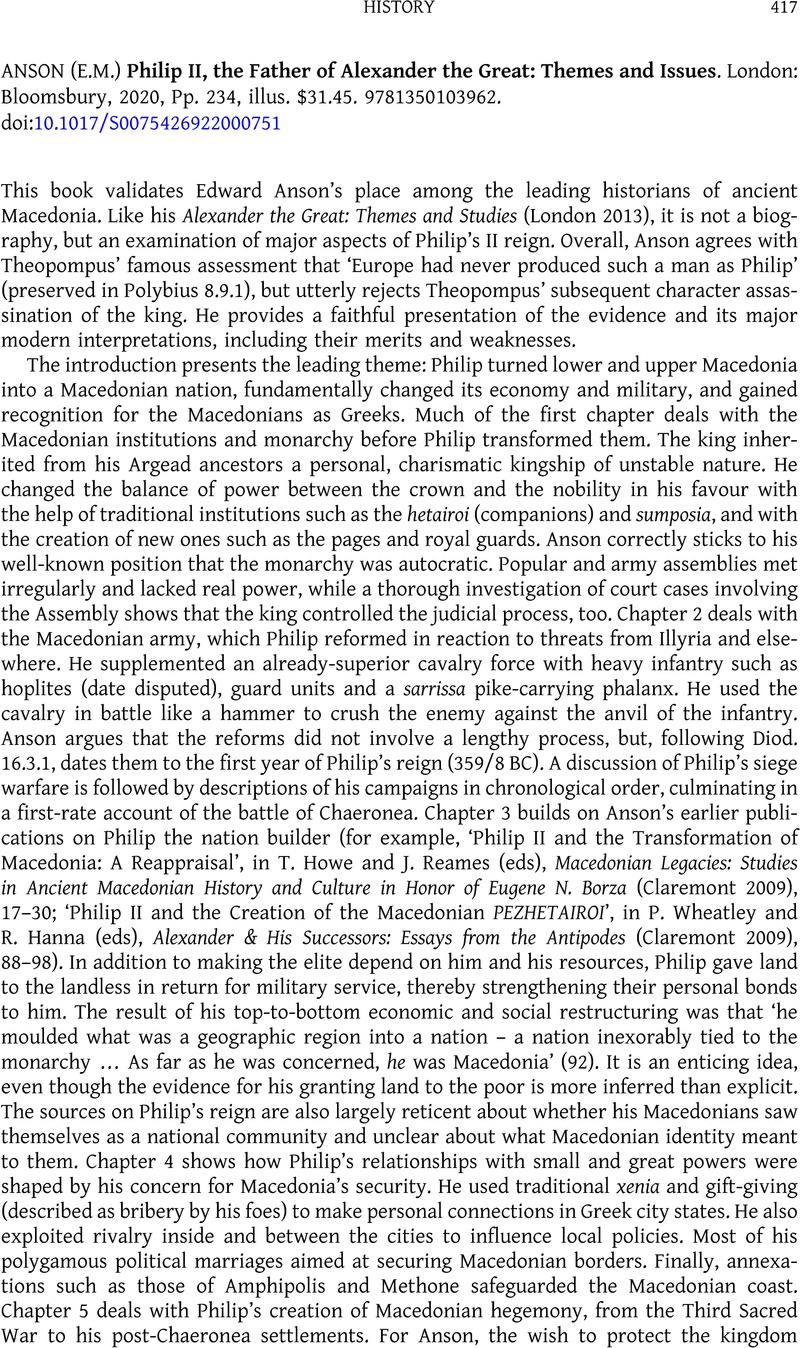No CrossRef data available.
Article contents
(E.M.) ANSON Philip II, the Father of Alexander the Great: Themes and Issues. London: Bloomsbury, 2020, Pp. 234, illus. $31.45. 9781350103962.
Review products
(E.M.) ANSON Philip II, the Father of Alexander the Great: Themes and Issues. London: Bloomsbury, 2020, Pp. 234, illus. $31.45. 9781350103962.
Part of:
History
Published online by Cambridge University Press: 11 April 2023
Abstract
An abstract is not available for this content so a preview has been provided. Please use the Get access link above for information on how to access this content.

- Type
- Reviews of Books: History
- Information
- Copyright
- © The Author(s), 2023. Published by Cambridge University Press on behalf of the Society for the Promotion of Hellenic Studies


